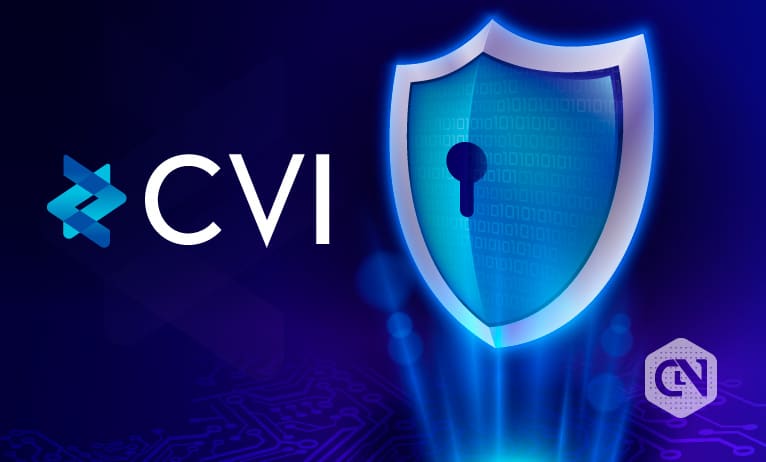The Bancor protocol has come under attack from rival DeFi platform Crypto Volatility Index (CVI) following its widely publicized decision to temporarily pause its impermanent loss insurance program due to what it said were “hostile market conditions”.
Shahaf Bar-Geffen, the CEO of COTI, creator of CVI, said Bancor’s decision to pause its IPL program exposes how the system is completely flawed. He claimed CVI is the only DeFi platform that presents a viable solution to the impermanent loss problem.
I love the people behind @Bancor , but their Impermanent Loss protection system is flawed (read the thread from @official_CVI ). We’re the only ones out there that offer a system that actually works and could help #defi users avoid impermanent loss all together. $COTI $GOVI https://t.co/Rv3CyrvpDv
— Shahaf Bar-Geffen (@shahafbg) June 21, 2022
Bancor’s move is undoubtedly a big blow to the DeFi industry because it needs liquidity to turn the wheels. Its impermanent loss protection was a welcome feature that provided liquidity pool investors protection against the fluctuating value of the tokens they placed in automated market makers.
Impermanent loss is one of the major challenges faced by liquidity pool providers. Liquidity pools exist to ensure there is liquidity available on decentralized exchanges. The term “liquidity” refers to the ease of buying and selling a specified asset on the market. If a transaction cannot occur due to a lack of buyers or sellers, this causes a “liquidity crisis” that blocks the entire market.
Because of this, DEXs need enough liquidity for each specific token pair they list, so buyers can be confident that demand for those assets will exist when the time comes to sell them. Without this liquidity, there would be no confidence; hence, no market would exist.
In the world of centralized exchanges, liquidity is created through a traditional order book, where buyers and sellers place their orders. Limit orders request to buy an asset at a fixed price set by the buyer or seller who places them, creating liquidity. Others then trade using market orders, which do not have a set price but buy and sell at whatever price is available, using whatever limit orders are available to complete their transactions.
Creating a standard order book for decentralized exchanges is more complex due to the gas fees and the speed at which transactions occur. So instead, they have come to rely on the liquidity pool, which incentivizes liquidity providers to deposit a pair of assets, such as BTC and ETH.
Advertisement
Other traders can then use these liquidity pools to trade one asset for another in good time. In exchange for tying up their assets in the liquidity pool, LPs earn rewards based on the number of transactions made. The larger the pool and the more traders there are, the greater their rewards can be.
Unfortunately, the downside is that these rewards can often be impacted by impermanent loss, which represents the loss compared to a simpler strategy of simply holding those two assets outside the liquidity pool. Because liquidity pools must remain balanced, with an equal value of the two assets, token price fluctuations mean the balance inside the pool must also change to reflect that new price. This can result in a loss compared to simply holding those tokens.
This is why protocols like Bancor and CVI offer impermanent loss insurance. Without them, they simply won’t attract as many liquidity providers, and they won’t be able to support as many transactions. However, Bancor’s sudden decision to halt its ILP program puts more pressure on the DeFi ecosystem when it’s already struggling to hold onto liquidity.
As CVI noted in a Twitter thread, Bancor’s IL protection was provided by the Bancor protocol, which staked BNT tokens in pools and used the fees to reimburse LPs for any shortfall they experienced. BNT was burned when the trading fees earned exceeded the cost of impermanent loss on a specific stake.
With Bancor having to stop their IL protection it’s time to ask – is it possible to have a pragmatic and sustainable solution for impermanent loss?
We now have one – CVI IL Protection!
1\6— Crypto Volatility Index (CVI) (@official_CVI) June 20, 2022
CVI pointed out the weakness of this model, adding it has similarities with that of the Terra ecosystem that went up in flames last month. The danger, CVI said, is that if all liquidity providers on Bancor decide to withdraw at once, while impermanent loss is severe, those LPs will suffer serious losses as the value of BNT dumps.
That’s likely why Bancor has temporarily stopped providing this protection amid a crash in the value of BNT, which was down more than 60% last week. The idea was to “give the protocol some room to breathe and recover,” Bancor said. “While we wait for markets to stabilize, we are working on getting IL protection reactivated as soon as possible,” it promised.
DeFi users were less than impressed by its reasoning, however. Many complained that Bancor had pulled the plug at the worst possible time when LPs needed it most.
what is the point of impermanent loss protection if it just disappears when u most need it LOL pic.twitter.com/GAJyhr6Tib
— Cobie (@cobie) June 19, 2022
Advertisement
As for CVI, it said its own mechanism takes a much more “pragmatic approach” that achieves a better balance between protection buyers and protection sellers.
While Bancor no doubt had to make a difficult decision, balancing everyone’s interests to minimize the disruption to its protocol amid these turbulent market conditions, it couldn’t help prevent negative publicity. So much so that it’s hard to see how it will come out of this situation with its reputation intact, even if it can restore impermanent loss protection soon.







